If you’re using a medical walking boot, you probably had a toe or foot surgery or currently suffer from a serious leg or foot injury.
These boots are essential for healing.
Even so, the transition from walking boots to normal shoes is an equally important process.
No matter how healed you think you are, you cannot simply wear your regular shoes after a certain number of weeks.
Only your physical therapist can tell you can when you can move on from the walking boot to a regular shoe.
Here, we aim to help you understand how to begin the transition process, what it entails, and what you need to keep in mind to have an injury-free and safe transition.
AThe basic thing is that walking boot, also known as a walking cast, is prescribed after ankle, foot, or lower leg injuries, and sometimes post-surgery.
Its primary purpose is to immobilize the injured area while allowing some mobility, aiding in faster healing.
Offering more stability than a traditional cast, it helps protect the injury and can potentially prevent the need for surgery. Proper use ensures optimal recovery. But let’s get deeper into it.
We hope you love the products we recommend! We only have products that we thoroughly investigate and believe are of real value to you.
As an Amazon Associate, Sports Send earns from qualifying purchases and collects a share of sales or other compensation from the links on this page. It is at no extra cost to you.
What Is a Walking Boot?
A walking boot also called a walking cast, is recommended by doctors or physical therapists following ankle, foot, and lower leg injuries.
In some cases, it may also be used after surgery.
Its main purpose is to immobilize the ankle and leg when moving around or walking.
The goal is to help in healing post-surgery or simply avoid the surgery in the first place.
Walking boots are primarily recommended by health professionals, as they provide you with more stability than a traditional cast.
It helps in keeping you as mobile as possible while protecting your injury at the same time.
The walking boot is strapped to the injured leg. This will aid in immobilizing it to help accelerate proper healing.
Wear your walking boot the right way for your foot injury to heal properly and as quickly as possible.
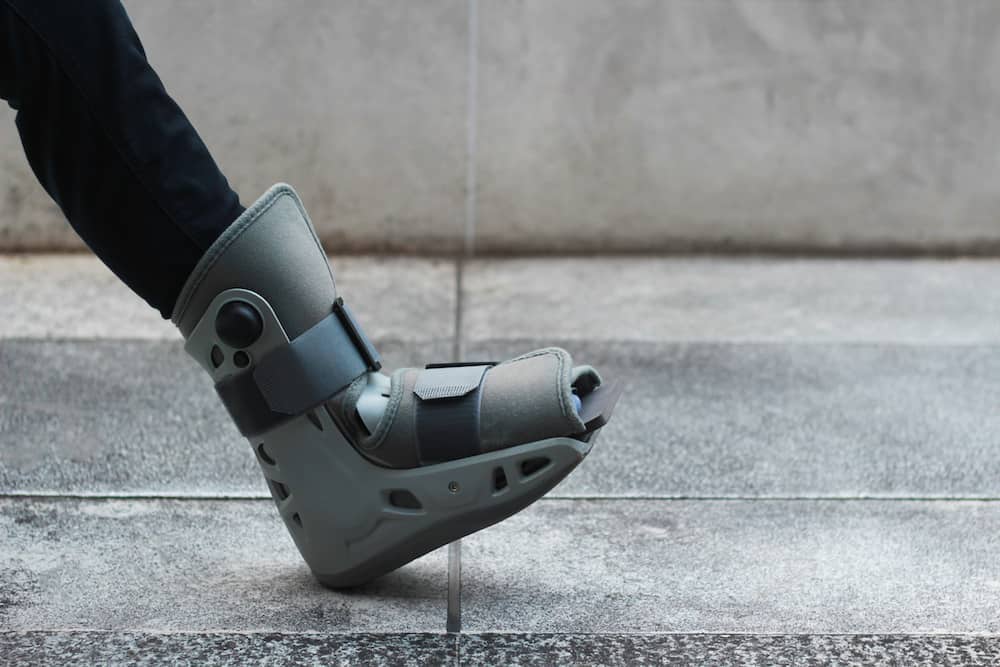
Transition From Walking Boot to Normal Shoe
As exciting as it may be to finally get rid of the walking boot, the last thing you need is another foot injury.
Everyone who has ever been in your situation was tempted to resume their daily activities as quickly as they can.
However, you have to understand that your foot may probably need more time since it is vulnerable and more sensitive than usual.
Take things slow and follow the steps we laid out below to get back to normal safely and quickly.
How Expert Recommendations and Editor Reviews Impact Your Walking Shoe Choices
When it comes to selecting the perfect pair of walking shoes, the combination of expert advice and detailed reviews plays a critical role. Here’s how each factor contributes to guiding your decision:
1. Expert Insights
Podiatrists, with their in-depth knowledge of foot health, offer invaluable guidance.
They consider various foot conditions, such as overpronation and wide feet, ensuring the shoes cater to specific needs. Their advice is based on clinical insights, prioritizing health and comfort.
Their recommended shoes are curated with these expert guidelines, making them a reliable choice for maintaining foot health.
2. Comprehensive Editor Reviews
Editors who personally test these shoes add another layer of assurance. By sharing their experiences, they provide a candid perspective on the shoe’s real-world performance.
These reviews often include insights into comfort, durability, and style, highlighting both strengths and potential drawbacks. When editors recommend a shoe they’d suggest to friends or family, it reinforces trust and confidence in the product.
How These Influence Your Decision
By combining podiatrist recommendations and editor reviews, you’re armed with authoritative information.
This dual approach ensures that you’re not just choosing a shoe that is popular, but one that meets high standards of health and functionality.
This synergy helps you make a well-informed decision, ultimately supporting both your lifestyle and well-being.
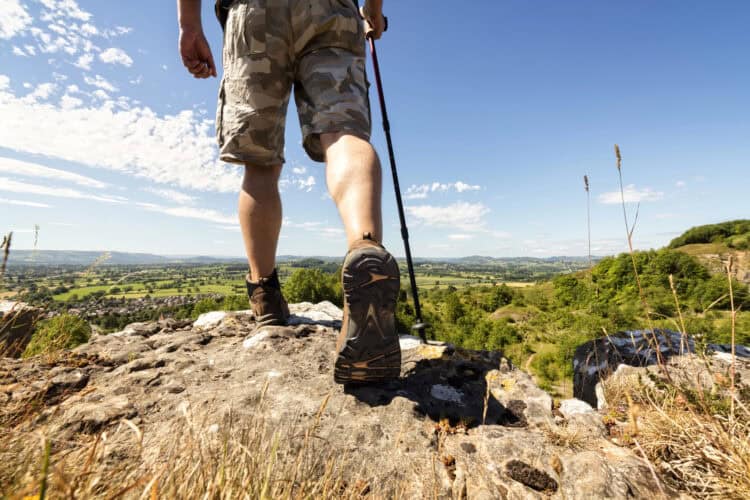
Understanding the Importance of Walking Shoe Material
Choosing the right material for your walking shoes is crucial, as it directly impacts comfort, durability, and performance. Here’s why the material matters and how to make the best choice for your needs.
1. Comfort and Breathability
The material of your walking shoes can significantly affect your comfort level.
Breathable materials like mesh or lightweight synthetic fabrics allow air circulation, keeping your feet cool and preventing moisture build-up, which can lead to blisters.
2. Weather Adaptability
Where you live or walk predominantly plays a role in material selection. If you’re in a damp or cold region, consider shoes made from leather or styles with a weatherproof upper.
These options provide insulation and protection from rain and snow, ensuring your feet stay warm and dry.
3. Durability and Support
Materials such as leather not only offer weather resistance but also enhance durability and support.
This is essential for those who walk frequently or over long distances, as reliable materials can offer better foot and ankle support, reducing fatigue.
Key Considerations When Choosing Material:
- Climate: Assess the typical weather conditions in your area.
- Frequency of Use: Consider how often you’ll be wearing the shoes.
- Level of Activity: Think about the type of walking you’ll be doing—urban strolls require different needs than mountain hikes.
By weighing these factors, you can make an informed decision and choose a material that will keep your walking shoes comfortable, durable, and suitable for the conditions you most often encounter.
How Expert Recommendations and Editor Reviews Impact Your Walking Shoe Choices
When it comes to selecting the perfect pair of walking shoes, the combination of expert advice and detailed reviews plays a critical role. Here’s how each factor contributes to guiding your decision:
1. Expert Insights
Podiatrists, with their in-depth knowledge of foot health, offer invaluable guidance. They consider various foot conditions, such as overpronation and wide feet, ensuring the shoes cater to specific needs. Their advice is based on clinical insights, prioritizing health and comfort. Their recommended shoes are curated with these expert guidelines, making them a reliable choice for maintaining foot health.
2. Comprehensive Editor Reviews
Editors who personally test these shoes add another layer of assurance. By sharing their experiences, they provide a candid perspective on the shoe’s real-world performance. These reviews often include insights into comfort, durability, and style, highlighting both strengths and potential drawbacks. When editors recommend a shoe they’d suggest to friends or family, it reinforces trust and confidence in the product.
How These Influence Your Decision
By combining podiatrist recommendations and editor reviews, you’re armed with authoritative information. This dual approach ensures that you’re not just choosing a shoe that is popular, but one that meets high standards of health and functionality. This synergy helps you make a well-informed decision, ultimately supporting both your lifestyle and well-being.
How Do You Transition From Walking Boots to Shoes?
You may have been wearing your walker boots anywhere between a month to three months.
This means you will be eager to get back to your regular self and do things you love, like dancing, running, or simply just being able to walk normally.
However, transitioning out of walking boots is not that easy; there is a lot of work yet to come.
How Important is Flexibility in Walking Shoes?
When it comes to selecting the perfect pair of walking shoes, flexibility is not at the top of the list. According to podiatric experts, comfort and fit take precedence. But why is flexibility not the key priority?
Immediate Comfort: The modern lifestyle demands shoes that are comfortable straight out of the box. Nobody has time to endure a break-in period. Shoes that fit well and provide comfort from the first step are highly favored.
Support and Stability: While flexibility is important, too much can lead to insufficient support. Walking shoes need to balance flexibility with adequate support to protect your feet during longer walks.
All-Day Wear: The goal is to find a shoe that offers all-day comfort, which means focusing on how well it accommodates your foot’s movement without excessive bending.
In summary, while flexibility plays a role, it is crucial to prioritize comfort and support to ensure your walking shoes meet your daily needs right from the start.

Choosing the Right Walking Shoe with Arch Support
When it comes to selecting a walking shoe with adequate arch support, several key aspects should be evaluated to ensure comfort and stability.
Stability and Support
A quality walking shoe needs to provide robust stability, especially in comparison to running shoes. These shoes should promote a smooth walking pattern rather than focusing on cushioning impact.
Opt for limited flexibility in the sole; too much bend compromises stability. To evaluate this, try bending the shoe at the toe box and heel counter.
If it easily folds or twists, it may not offer the necessary support for your arches.
Material Considerations
The material of your walking shoe should be selected based on your typical walking environment. Breathability is crucial, particularly if you are in a warmer climate.
For colder or wetter conditions, materials like leather or waterproof uppers can provide additional protection. Look for shoes that incorporate a rocker bottom or a rigid midsole with a firm heel counter.
This helps stabilize excessive inward or outward foot motions, essential for effective arch support.
Flexibility in Uppers
While a rigid sole is important, having flexible uppers can be beneficial. Flexible uppers can help accommodate the natural swelling of feet during walking and reduce irritation on the top of the foot.
Ensure the shoe’s flex point aligns with the natural bending point of your foot to enhance comfort.
By considering these factors, you can enhance your walking experience while providing the necessary arch support to maintain foot health.
What to Consider When Choosing Outsoles and Insoles for Walking Shoes
Outsoles
When selecting walking shoes, pay attention to the outsole design. A more rigid midsole provides the stability your feet need during each step.
Sturdy outsoles help distribute weight evenly, minimizing the risk of slipping or twisting your ankle. Opt for shoes with outsoles that feature good traction, especially if you plan to walk on various surfaces.
Insoles and Arch Support
Insoles play a crucial role in comfort and support, but not all are created equal. The ability to remove insoles is important, especially if you use custom orthotics.
While many shoes come with basic insoles, they rarely offer sufficient support on their own.
For enhanced comfort and shock absorption, consider investing in custom-molded orthotics.
These are tailored to your specific foot shape and often provide the additional cushioning that standard insoles may lack.
A custom fit can vastly improve your walking experience by addressing unique foot needs and ensuring adequate support.

Key Features of a Good Walking Shoe for Narrow Feet
When searching for the perfect walking shoe for narrow feet, certain features stand out as essential for comfort and support. Here’s what to look for:
1. Enhanced Cushioning and Support:
A top priority is finding shoes that provide ample cushioning, especially if you have high arches or sensitive areas like the balls of your feet.
Look for shoes with specialized padding and arch support that distribute pressure evenly, preventing discomfort during long walks.
2. Secure Fit:
For narrow feet, finding a shoe that fits snugly without sliding is crucial.
A shoe with a streamlined design and secure lacing system ensures a fit that won’t cause blisters or rubbing, even after extensive use.
The absence of a break-in period is a bonus, indicating the shoe adapts well from the first wear.
3. Availability in Various Widths:
Shoes are available in both standard and narrow options that cater to specific foot shapes. This ensures that those with slender feet can enjoy a comfortable fit without resorting to extra insoles or adjustments.
4. Trendy Design:
While functionality is key, style shouldn’t be overlooked. Many of today’s walking shoes offer fashionable designs such as the chunky dad-sneaker look, available in versatile color options.
These can easily pair with any outfit, making them both practical and stylish.
By focusing on these features, you can find a walking shoe that’s both functional and fashionable, offering lasting comfort and support tailored specifically for narrow feet.
To test the flexibility of a walking shoe, start by holding the shoe at both the toe box and the heel counter. Attempt to fold the shoe in half by applying pressure to these ends.
This action will help you evaluate the shoe’s sturdiness. If the shoe easily bends or twists, it indicates that the shoe is overly flexible, which may not provide the necessary support for walking.
A good walking shoe should offer some resistance and should not fold completely in half.
How Important is Flexibility in Walking Shoes?
When it comes to selecting the perfect pair of walking shoes, flexibility is not at the top of the list. According to podiatric experts, comfort and fit take precedence. But why is flexibility not the key priority?
- Immediate Comfort: The modern lifestyle demands shoes that are comfortable straight out of the box. Nobody has time to endure a break-in period. Shoes that fit well and provide comfort from the first step are highly favored.
- Support and Stability: While flexibility is important, too much can lead to insufficient support. Walking shoes need to balance flexibility with adequate support to protect your feet during longer walks.
- All-Day Wear: The goal is to find a shoe that offers all-day comfort, which means focusing on how well it accommodates your foot’s movement without excessive bending.
In summary, while flexibility plays a role, it is crucial to prioritize comfort and support to ensure your walking shoes meet your daily needs right from the start.
Outsoles
What to Consider When Choosing Outsoles and Insoles for Walking Shoes
When selecting walking shoes, pay attention to the outsole design. A more rigid midsole provides the stability your feet need during each step. Sturdy outsoles help distribute weight evenly, minimizing the risk of slipping or twisting your ankle. Opt for shoes with outsoles that feature good traction, especially if you plan to walk on various surfaces.
Insoles and Arch Support
Insoles play a crucial role in comfort and support, but not all are created equal. The ability to remove insoles is important, especially if you use custom orthotics. While many shoes come with basic insoles, they rarely offer sufficient support on their own.
For enhanced comfort and shock absorption, consider investing in custom-molded orthotics. These are tailored to your specific foot shape and often provide the additional cushioning that standard insoles may lack. A custom fit can vastly improve your walking experience by addressing unique foot needs and ensuring adequate support.
Key Features of a Good Walking Shoe for Narrow Feet
When searching for the perfect walking shoe for narrow feet, certain features stand out as essential for comfort and support. Here’s what to look for:
1. Enhanced Cushioning and Support:
A top priority is finding shoes that provide ample cushioning, especially if you have high arches or sensitive areas like the balls of your feet. Look for shoes with specialized padding and arch support that distribute pressure evenly, preventing discomfort during long walks.
2. Secure Fit:
For narrow feet, finding a shoe that fits snugly without sliding is crucial. A shoe with a streamlined design and secure lacing system ensures a fit that won’t cause blisters or rubbing, even after extensive use. The absence of a break-in period is a bonus, indicating the shoe adapts well from the first wear.
3. Availability in Various Widths:
Shoes available in both standard and narrow options cater to specific foot shapes. This ensures that those with slender feet can enjoy a comfortable fit without resorting to extra insoles or adjustments.
4. Trendy Design:
While functionality is key, style shouldn’t be overlooked. Many of today’s walking shoes offer fashionable designs such as the chunky dad-sneaker look, available in versatile color options. These can easily pair with any outfit, making them both practical and stylish.
By focusing on these features, you can find a walking shoe that’s both functional and fashionable, offering lasting comfort and support tailored specifically for narrow feet.
To test the flexibility of a walking shoe, start by holding the shoe at both the toe box and the heel counter. Attempt to fold the shoe in half by applying pressure to these ends. This action will help you evaluate the shoe’s sturdiness. If the shoe easily bends or twists, it indicates that the shoe is overly flexible, which may not provide the necessary support for walking. A good walking shoe should offer some resistance and should not fold completely in half.
Physical Therapy
Once you start the process of transitioning out of the walking boot, you will then have to begin two to three months of rehabilitation.
The main purpose of rehabilitation is to restore strength and motion in your foot and ankle.
The first step in your rehabilitation journey is physical therapy.
You will typically start with non-weight-bearing range of motion exercises, like resistance band exercises, ankle circles, calf stretching, and more.
Your program’s difficulty will increase significantly once your physical therapist clears you to remove the walking boot.
At this point, there may be partial weight-bearing or full weight-bearing of the boot in an orthotic shoe or lace-up ankle brace.
If the X-ray looks fine, your therapist may even recommend a full weight-bearing status in a normal shoe.
Keep in mind that every person and their injury is different.
Hence, follow your physical therapist’s advice perfectly when it comes to weight-bearing status.
Importance of Exercises for Better Recovery
After having full weight-bearing status, you can further improve your balance by performing appropriate exercises.
These can include simple exercises, like standing with your feet together and your eyes closed.
You can even try standing with one foot in front of the other to train the receptors in the ankle joint.
These are just two examples of the many balance exercises that can aid you in restoring ankle function.
Additionally, you will begin to feel stronger in your calf muscles since you will be walking and doing heel raises.
If you are unsure about which exercises you should be doing, don’t hesitate to consult your physical therapist for more personalized recommendations.
It is also important that you don’t push yourself more than you can, as that may end up causing more injury.
Possible Pain
With all these exercises, you will improve your ankle strength and range of motion.
However, there is also a high possibility that you will experience more pain.
As you transition to the normal shoe, there will be increased demand on your foot and ankle. And this may cause pain.
Do not be anxious about this pain. It is quite normal to experience more pain during this phase.
The pain will subside and get better with exercises, time, proper supplementation, good nutrition, and moderation of your activity levels.
What Should You Consider When Buying a Walking Shoe in Terms of Support and Stability?
When choosing a walking shoe, focus on support and stability to ensure a comfortable and efficient walk.
Unlike running shoes, which cater to absorbing impact, walking shoes need to aid your natural walking pattern.
Stability Over Flexibility
- Stability: Look for shoes that prioritize stability over flexibility. A stable shoe helps guide your foot during each step, keeping you steady and supported.
- Flexibility Test: To gauge a shoe’s flexibility, hold it at both the toe box and heel, then try folding it. If the shoe folds easily or twists with little effort, it lacks the necessary support for stable walking.
Assess Support Features
- Support Structures: Opt for shoes with reinforced heel and arch support to maintain your foot’s alignment. This structure plays a crucial role in minimizing the risk of strain and injury.
- Limited Bend: Shoes with limited bend provide better support. They should not only prevent excessive movement but also enhance your overall walking experience by providing a solid platform.
By ensuring your walking shoe emphasizes stability and offers the right amount of support, you’ll enjoy longer walks with fewer issues.
Why is Cushioning Important in Walking Shoes?
When choosing a good pair of walking shoes, cushioning is paramount. Cushioning plays a critical role in ensuring comfort and protection for your feet during long walks.
Here’s why it’s essential and which models are renowned for their supreme cushioning:
Why Cushioning Matters
Shock Absorption: Quality cushioning helps absorb the impact as your foot strikes the ground, reducing stress on joints and minimizing the risk of injury.
Comfort: Enhanced cushioning provides a plush walking experience, preventing discomfort and pain over prolonged periods.
Blister Prevention: With adequate cushioning, friction is reduced, thereby decreasing the likelihood of developing blisters and hot spots.
Shoes with Maximum Cushioning
-
- Features a plush interior and a super-soft midsole, designed to envelop your foot in comfort for a cloud-like feel.
-
- Equipped with Nike‘s advanced foam technology that offers a responsive and cushioned ride, perfect for those seeking ultimate comfort.
-
- Famous for its generous cushioning, this model is built for distance walkers who desire a soft landing with every step.
For anyone serious about walking, investing in a pair of shoes that prioritize cushioning can make all the difference in your walking experience. Say goodbye to discomfort and hello to enjoyable strolls with these top picks.
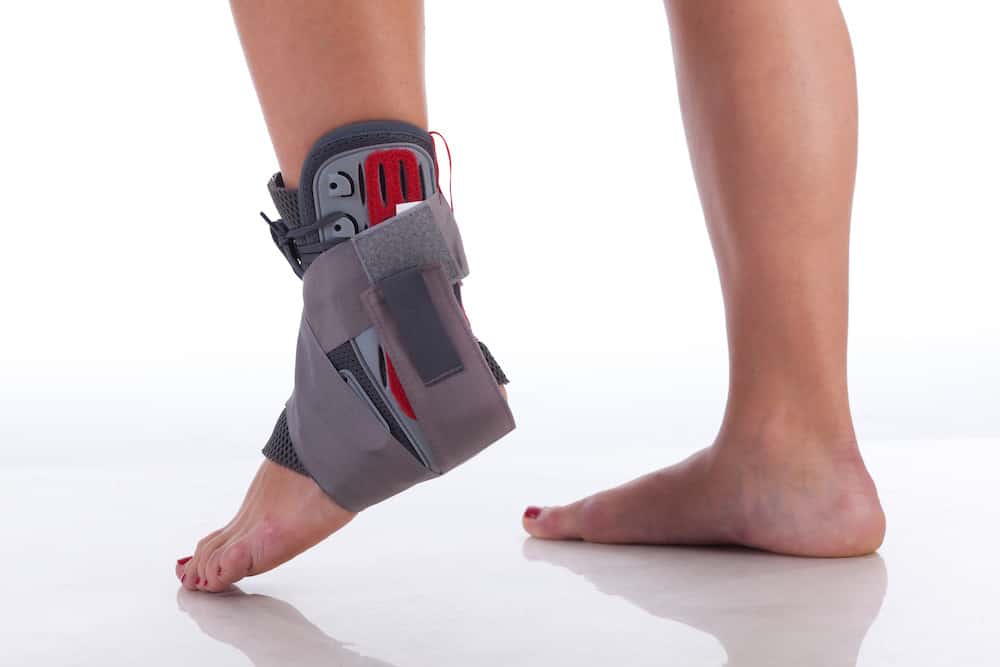
What Should You Consider When Buying a Walking Shoe in Terms of Support and Stability?
Your Attractive Heading
When choosing a walking shoe, focus on support and stability to ensure a comfortable and efficient walk. Unlike running shoes, which cater to absorbing impact, walking shoes need to aid your natural walking pattern.
Stability Over Flexibility
- Stability: Look for shoes that prioritize stability over flexibility. A stable shoe helps guide your foot during each step, keeping you steady and supported.
- Flexibility Test: To gauge a shoe’s flexibility, hold it at both the toe box and heel, then try folding it. If the shoe folds easily or twists with little effort, it lacks the necessary support for stable walking.
Assess Support Features
- Support Structures: Opt for shoes with reinforced heel and arch support to maintain your foot’s alignment. This structure plays a crucial role in minimizing the risk of strain and injury.
- Limited Bend: Shoes with limited bend provide better support. They should not only prevent excessive movement but also enhance your overall walking experience by providing a solid platform.
By ensuring your walking shoe emphasizes stability and offers the right amount of support, you’ll enjoy longer walks with fewer issues.
Which Models Provide Maximum Cushioning?
Shoes with Maximum Cushioning
- Brooks Glycerin
- Features a plush interior and a super-soft midsole, designed to envelop your foot in comfort for a cloud-like feel.
- Nike ZoomX Invincible Run
- Equipped with Nike’s advanced foam technology that offers a responsive and cushioned ride, perfect for those seeking ultimate comfort.
- Hoka One One Bondi
- Famous for its generous cushioning, this model is built for distance walkers who desire a soft landing with every step.
For anyone serious about walking, investing in a pair of shoes that prioritize cushioning can make all the difference in your walking experience. Say goodbye to discomfort and hello to enjoyable strolls with these top picks.
Wearing Ankle Brace After Walking Boot
Most walker boots provide great support following operations or injuries to the foot, ligaments, and ankle.
When transitioning out of a walking boot, using an ankle brace will provide you with more movement while still taking most of the weight away from your injury.
Using an ankle brace after walking boots is important when you want to start walking again or want to get back to the sport you love.
This will make the transition process a little easier and go a little smoother.
What Features Make Walking Shoes Highly-Rated According to Fitness Editors and Podiatrists?
When it comes to choosing the perfect walking shoe, both fitnesseditorsandpodiatrists highlight several key features that set them apart.
Stability Over Flexibility
Stability is Key: Walking shoes should prioritize stability over flexibility. Unlike running shoes, which absorb impact, walking shoes need to support the natural walking pattern.
Flexibility Test: A quick test for flexibility is to attempt folding the shoe in half from the toe to the heel. If it folds too easily, it lacks the necessary support.
Material Matters
- Breathability and Environment-Appropriate: The material of the shoe should be chosen based on your environment. Breathable materials are essential for overall comfort.
- If you’re walking in cooler or wetter conditions, consider shoes with leather or waterproof uppers.
Structural Support Features
Rocker Bottoms and Rigid Midsoles: A shoe with a rocker bottom or a sturdy midsole provides the support needed to manage foot movement and reduce the risk of inward or outward rolling during heel strikes.
Firm Heel Counter: Look for a firm heel counter to enhance stability and control excessive rolling of the foot.
Comfort and Flexibility in the Upper
Flexible Uppers for Comfort: While the sole should be sturdy, the upper part of the shoe can benefit from some flexibility. This allows for natural foot swelling and reduces irritation on the top of the foot.
Matching Flex Points: Make sure that the shoe’s flex point aligns with the natural bend of your foot to promote comfort and reduce strain during long walks.
By keeping these features in mind, one can select walking shoes that offer superior comfort and support, making each step enjoyable and stable.
What Features Make Walking Shoes Highly-Rated According to Fitness Editors and Podiatrists?
When it comes to choosing the perfect walking shoe, both fitness editors and podiatrists highlight several key features that set them apart.
Stability Over Flexibility
- Stability is Key: Walking shoes should prioritize stability over flexibility. Unlike running shoes, which absorb impact, walking shoes need to support the natural walking pattern.
- Flexibility Test: A quick test for flexibility is to attempt folding the shoe in half from the toe to the heel. If it folds too easily, it lacks the necessary support.
Material Matters
- Breathability and Environment-Appropriate: The material of the shoe should be chosen based on your environment. Breathable materials are essential for overall comfort. If you’re walking in cooler or wetter conditions, consider shoes with leather or waterproof uppers.
Structural Support Features
- Rocker Bottoms and Rigid Midsoles: A shoe with a rocker bottom or a sturdy midsole provides the support needed to manage foot movement and reduce the risk of inward or outward rolling during heel strikes.
- Firm Heel Counter: Look for a firm heel counter to enhance stability and control excessive rolling of the foot.
Comfort and Flexibility in the Upper
- Flexible Uppers for Comfort: While the sole should be sturdy, the upper part of the shoe can benefit from some flexibility. This allows for natural foot swelling and reduces irritation on the top of the foot.
- Matching Flex Points: Make sure that the shoe’s flex point aligns with the natural bend of your foot to promote comfort and reduce strain during long walks.
By keeping these features in mind, one can select walking shoes that offer superior comfort and support, making each step enjoyable and stable.
How Long Does It Take To Wean Out of a Walking Boot?
Once you get to full weight-bearing status, it is time to wean out of the walking boot.
This means you can now allow more stress to the affected area. This is done by gradually adding stress.
As a patient, you are initially allowed to come out of the boot for an hour in the morning and an hour in the afternoon.
Whichever hours you choose, make sure they are not the busiest.
Even though it is just for an hour with minimal activity, the fact that you are getting out of the walking boot will add stress to the affected area.
The boot weaning duration can differ based on the severity of the injury and how well your leg can recover.
Only a health professional familiar with your case can determine this protocol duration.
Here’s an example of a boot-weaning protocol for six weeks for you to get an idea of what it entails:
Boot Weaning Protocol (Six Weeks)
Ensure you follow this schedule to wean from the walking boot over the next six weeks.
Ideally, wear a pair of supportive and protective shoes, like athletic or hiking boots.
If you experience increased pain over a two-day period, slow down your progression and wait for a few days before advancing to the next stage.
You should wean out of a walking boot only after you are fully weight-bearing and not at the same time.
- Days 1 to 10
Remove the walking boot for an hour in the morning and an hour in the afternoon.
- Days 11 to 21
Remove the walking boot for two hours in the morning and two hours in the afternoon.
- Days 22 to 33
Remove the walking boot for three hours in the morning and three hours in the afternoon.
- Days 34 to 42
Remove the walking boot for four hours in the morning and four hours in the afternoon.
- 7th Week Onwards
Remove the walking boot completely.

What To Expect When Walking Boot Comes Off?
It is natural for your foot to feel a little strange after removing your walking boot, especially after wearing it for months.
Apart from looking wrinkled and a bit pale, there is a high chance your foot may even be swollen and stiffer than usual.
Once you remove the walking boot, you will instantly feel lighter and find it much easier to maneuver.
To gain a more in-depth look at what would happen after you remove it, here are more detailed descriptions.
Skin
After taking off the walking boot, the first thing you will notice is your skin under it.
The skin here will be far more sensitive than usual, which means you have to be extremely gentle with it for about a week.
This includes resisting the urge to scratch the itch no matter how tempting it may be.
Doing so can damage the skin easily, possibly even break it, and all of this will further put you at risk of developing an infection.
We recommend giving yourself a foot bath with lukewarm water (not hot) twice a day for 20 minutes.
Do this for at least a week after the boot is off. Make sure you are gently patting your skin dry with a towel afterward.
There may be a possibility that the skin on your foot may appear red.
In such cases, you can take a towel soaked in cold water for about 10 minutes and wrap it around your feet for some time.
After your feet are completely dry, apply moisturizer to the affected area liberally.
The moisturizer you use must be pH-balanced and free from any artificial scents. Scented moisturizerstend to have certain ingredients that can irritate the skin.
tend to have certain ingredients that can irritate the skin.
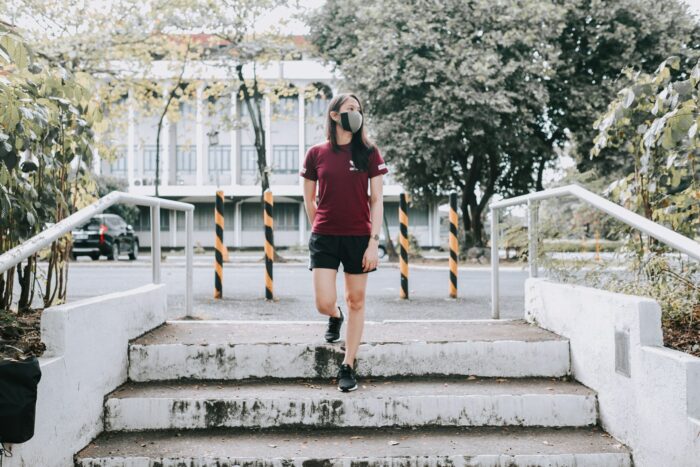
Hair
You may notice that the hair on the affected area appears much darker and thicker than the hair on the rest of your leg.
Do not be alarmed looking at this, as it is completely normal. It will most likely disappear naturally over a few days.
The hair will experience a greater amount of friction than it did while you wore the walking boot.
If you want to shave your legs, make sure you don’t do it when your skin still feels sensitive.
As mentioned, the sensitivity can take up to a week to fully go.
Shaving your hair while it’s still sensitive can make it very likely that you cut your skin. This, in turn, can greatly increase your risk of infection.
Pros and Cons of Highly-Cushioned Walking Shoes
Walking shoes with ample cushioning offer a unique blend of comfort and support, but they might not be suitable for everyone. Here’s a detailed look at their advantages and disadvantages.
Pros
- Enhanced Comfort: The plush cushioning provides a soft landing, reducing the impact on joints and making them ideal for long walks.
- Versatile Arch Support: Many of these shoes are designed to accommodate both flat and arched feet, offering adaptable support.
- Foot Cradling Design: The extended heel and well-padded interior keep your foot snugly supported from all angles, reducing fatigue.
Cons
- Not Suited for Narrow Feet: Individuals with narrow feet might find these shoes too roomy, leading to a less secure fit.
- Bulky Appearance: The chunky design often associated with highly-cushioned shoes may not appeal to everyone’s fashion sense.
Highly-cushioned walking shoes can be a great choice for enhancing your walking experience, especially if you prioritize comfort. However, it’s essential to consider if their design aligns with your specific foot shape and style preferences.
Types of Injuries that May Require a Walking Boot
Walking boots can be valuable aids for managing foot pain, injury, or post-operative recovery. They relieve pain, immobilize the injured or sensitive area, and stabilize the foot.
Here are some of the most common foot injuries and surgeries requiring the use of walking boots: –
Moderate to Severe Ankle Sprains
Walking boots can stabilize and support the foot as it heals from a moderate or severe ankle sprain. By immobilizing the foot, walking boots protect the torn or stretched ligaments.
Likewise, its minimal cushioning relieves pain from accidental contact, inflammation, and swelling. And its gradual weight-bearing accelerates the healing process.
Fractures
Walking boots are effective recovery aids for healing from such injuries as a tibial plateau and calcaneal fracture.
They restrict movement to facilitate proper alignment of the fractured bones. Also, they shield the injured bones from external pressure while gently compressing them to minimize swelling.
Achilles Tendon
Repetitive stress to the Achilles’ tendons can result in painful inflammation and limit running, walking, or jumping workouts.
Doctors may recommend using walking boots when recovering from an Achilles Tendon repair surgery.
Walking boots help by minimizing strain and supporting the ankle area during the initial phase of the recovery. Its in-built heel lifts the ankle area to divert tension from the Achilles’ tendons and facilitate optimal healing.
Plantar Fasciitis
Doctors may require the use of walking boots when managing severe plantar fasciitis. The boot immobilizes the foot and ankle to relieve pressure on the plantar fascia for faster healing.
Further, its cushioned insoles redistribute pressure away from the sensitive areas to minimize pain and discomfort associated with the injury.
Midfoot Injuries
Recovery from Lisfranc injury and other midfoot fractures and ligament tears may require the use of walking boots.
Here, the boots restrict movement of the midfoot joint to alleviate pain and promote healing.
Further, the boots have inserts for offloading pressure away from the injured midfoot area while acting as a stable platform as you gradually transition to regular activities.
Overall Weakness
Regardless of the extent of your foot injury, you are most definitely going to experience weakness in your foot after spending so many weeks in the walking boot.
This means you should make it a point to return to your normal level of activity only gradually.
Take things slowly, with easy steps at first, and support yourself as much as possible.
As time goes by and the number of exercises you perform, your foot will begin to heal.
Eventually, you will begin to put more weight on that foot until you start to feel improvement.
Guide to the Best Walking Shoes for Women
Choosing the right walking shoe can enhance your comfort and complement your unique foot needs. Here’s a comprehensive guide to help you find the perfect fit based on different requirements.
Top Pick for All-Around Comfort
For those seeking superior comfort combined with support, look for shoes that offer cushioning technology designed to absorb impact.
A pair with a well-cushioned midsole and ample arch support can be the ideal companion for everyday walking adventures.
Ideal Choice for Narrow Feet
If you have narrow feet, finding a shoe that offers a snug fit without compromising comfort is crucial.
Seek options with an adjustable lacing system to ensure a secure fit, as well as a design that contours closely to the foot to prevent slipping and blisters.
Perfect for High-Cushioning Enthusiasts
For those who prefer maximum cushioning, consider shoes that feature extra-thick soles designed to provide plush support.
These shoes typically boast enhanced shock absorption, making them perfect for prolonged walking sessions where comfort is key.
By considering your specific foot needs and preferences, you can find the perfect pair of walking shoes that offer both style and function. Happy walking!
How Does Walking Benefit Both Mental and Physical Health?
Walking stands out as a universally accessible and low-impact exercise that offers a multitude of benefits for both mind and body.
As a fundamental and straightforward activity, walking has experienced a surge in popularity, with new trends emphasizing its diverse advantages.
Physical Benefits
Heart Health: Regular walking elevates the heart rate, promoting better cardiovascular fitness. This reduces the risk of heart disease and supports overall heart health.
Weight Management: By incorporating walking into your daily routine, you can burn calories, aiding in weight management and contributing to a healthier lifestyle.
Bone and Muscle Strength: Walking helps to strengthen bones and muscles without the intense impact that other forms of exercise might bring, thus reducing the risk of osteoporosis and improving muscle tone.
Mental Health Benefits
Stress Relief: Walking provides an opportunity to unwind, reducing cortisol levels and offering a calming effect on the mind.
Enhanced Mood: Physical activity such as walking releases endorphins, often known as the body’s natural mood enhancers, which can alleviate symptoms of depression and anxiety.
Mental Clarity: Engaging in a walk, particularly in nature, can improve mental clarity and focus, boosting creative thinking and helping to clear mental clutter.
Walking trends like Nordic walking and ‘cozy cardio’ have introduced innovative ways to maximize these benefits, each adding unique challenges and enhancements to the simple act of walking.
Whether you’re strolling through your neighborhood or embarking on nature hikes, walking is a practical way to improve both mental and physical health.
Guide to the Best Walking Shoes for Women
Choosing the right walking shoe can enhance your comfort and complement your unique foot needs. Here’s a comprehensive guide to help you find the perfect fit based on different requirements.
Top Pick for All-Around Comfort
For those seeking superior comfort combined with support, look for shoes that offer cushioning technology designed to absorb impact. A pair with a well-cushioned midsole and ample arch support can be the ideal companion for everyday walking adventures.
Ideal Choice for Narrow Feet
If you have narrow feet, finding a shoe that offers a snug fit without compromising comfort is crucial. Seek options with an adjustable lacing system to ensure a secure fit, as well as a design that contours closely to the foot to prevent slipping and blisters.
Perfect for High-Cushioning Enthusiasts
For those who prefer maximum cushioning, consider shoes that feature extra-thick soles designed to provide plush support. These shoes typically boast enhanced shock absorption, making them perfect for prolonged walking sessions where comfort is key.
By considering your specific foot needs and preferences, you can find the perfect pair of walking shoes that offer both style and function. Happy walking!
How Does Walking Benefit Both Mental and Physical Health?
Walking stands out as a universally accessible and low-impact exercise that offers a multitude of benefits for both mind and body. As a fundamental and straightforward activity, walking has experienced a surge in popularity, with new trends emphasizing its diverse advantages.
Physical Benefits
- Heart Health: Regular walking elevates the heart rate, promoting better cardiovascular fitness. This reduces the risk of heart disease and supports overall heart health.
- Weight Management: By incorporating walking into your daily routine, you can burn calories, aiding in weight management and contributing to a healthier lifestyle.
- Bone and Muscle Strength: Walking helps to strengthen bones and muscles without the intense impact that other forms of exercise might bring, thus reducing the risk of osteoporosis and improving muscle tone.
Mental Health Benefits
- Stress Relief: Walking provides an opportunity to unwind, reducing cortisol levels and offering a calming effect on the mind.
- Enhanced Mood: Physical activity such as walking releases endorphins, often known as the body’s natural mood enhancers, which can alleviate symptoms of depression and anxiety.
- Mental Clarity: Engaging in a walk, particularly in nature, can improve mental clarity and focus, boosting creative thinking and helping to clear mental clutter.
Walking trends like Nordic walking and ‘cozy cardio’ have introduced innovative ways to maximize these benefits, each adding unique challenges and enhancements to the simple act of walking. Whether you’re strolling through your neighborhood or embarking on nature hikes, walking is a practical way to improve both mental and physical health.
Conclusion
To transition from walking boots to normal shoes and into your old routines safely, you have to follow a strict set of rules.
Keep in mind that healing takes a lot of time.
With the correct implementation of a physical therapy program, along with proper nutrition and supplementation, you will be well on your way to living a regular, pain-free life again.
You might even be able to get back to running again soon if you follow your physical therapist’s professional advice to the T.

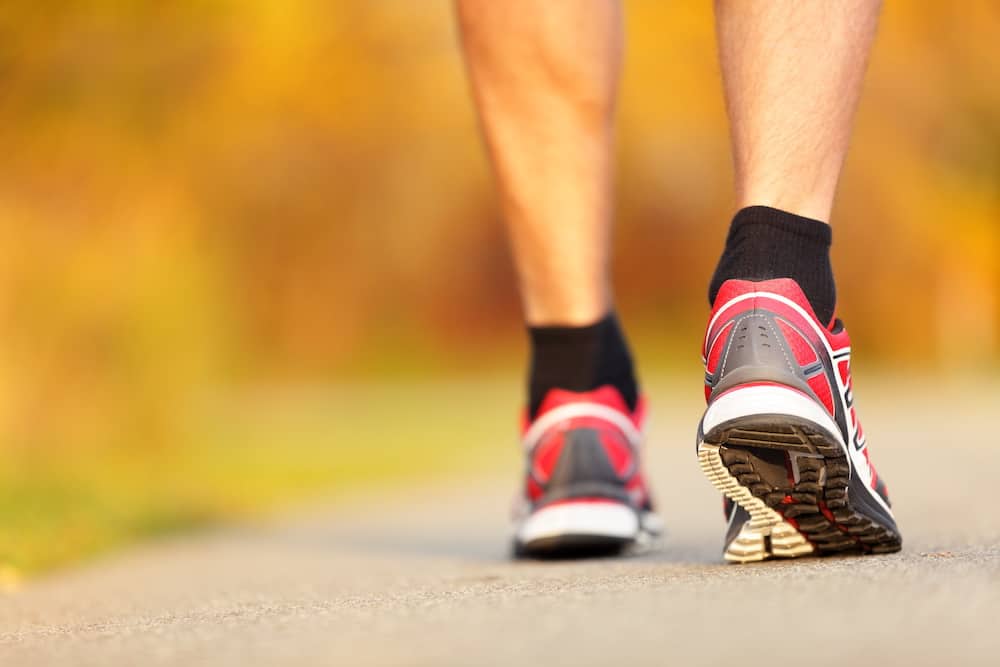
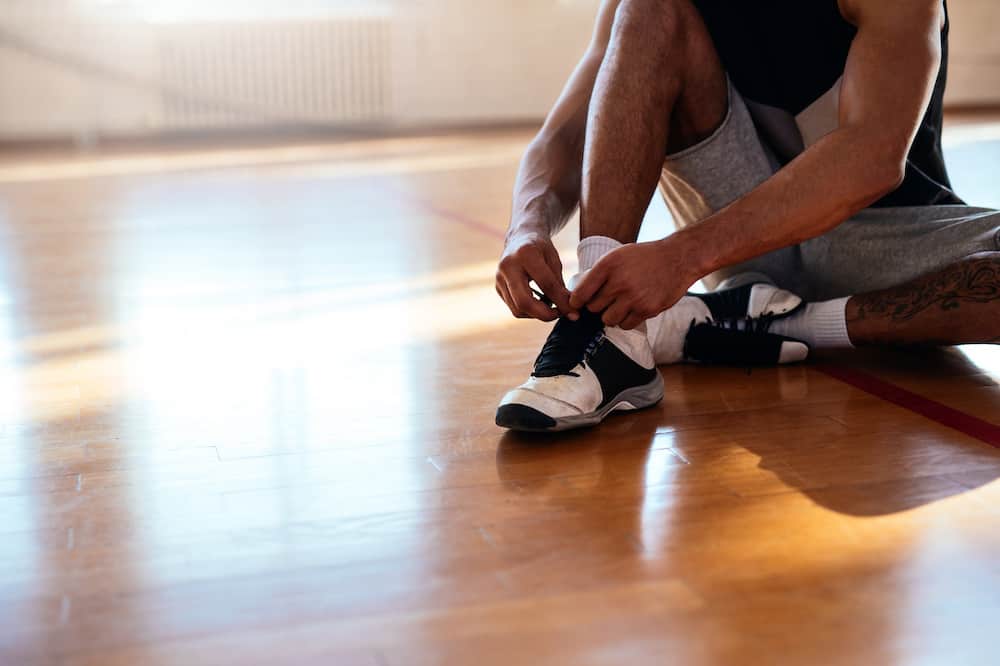











Hey there, I really liked reading through your article. When I went to high school, I’ve always seen people end up in casts after playing soccer or other physically active sports that involve the legs. This gave me a lot of insight onto what my peers might have done to get out of their leg cast so thanks for this awesome and informative article. Does it really take only 7 weeks for a leg injury to heal?
Hello, Gabriel J, and thank you.
Thank you for your kind words.
Great to hear about your benefit of the article too.
Seven weeks is not unrealistic. But of course, types of injuries are different, so that it can be some difference.
Don’t hesitate to contact me if I can help you with anything else or if you have any questions.
Thank you for this great post about transitioning from a walking boot. I had no idea that it takes 6 weeks to transition out of it. Your recommendations of taking it off in increments over a 6 week period is a good one. I’ve seen too many people take the boot right off and only put it back on when the injury hurts, which, of course, just reinjures the area. This is how damage can become permanent.
Hello, Cynthia, and thank you.
Thank you for your kind words.
Great to hear about your benefit of the article too.
Don’t hesitate to contact me if I can help you with anything else or if you have any questions.
Thank you for this great post; it’s very informative!
I’m currently trying to heal from ankle/foot breaks on the same leg that have involved surgery.
The doctor has told me to start trying to walk with my boot and to start using a brace to walk around with at home in about a month. That’s all the information that I was given.
This article has explained how to even go about this process much more clearly!
Thank you!!
Hi, Jenny Bruton, and thank you.
Thank you for your kind words.
Great to hear about your benefit of the article too.
Don’t hesitate to contact me to help you with anything else or if you have any questions.